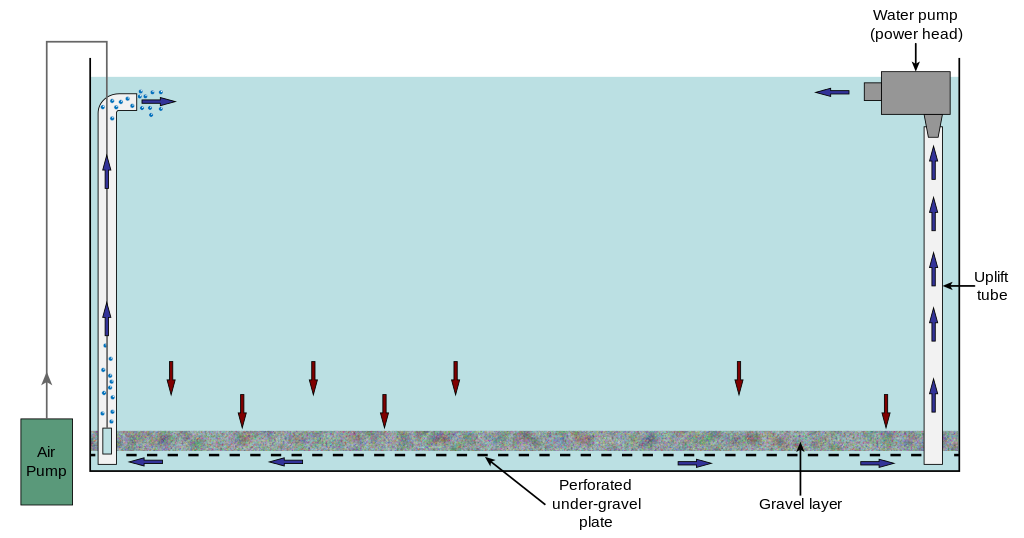Out of all infections that aquarium fish can catch, Columnaris (also called saddleback disease) is arguably the worst possible disease. This infection is extremely hard to treat effectively and has a high mortality rate because of how aggressive it is. Typically you don’t notice symptoms until the infection is advanced, which just makes it all worse.
Understanding how to identify and treat Columnaris will give you the best chance of saving your fish. So let’s go over the basics of this common fish disease.
What Causes Columnaris
Columnaris infection is caused by a strain of bacteria Flavobacterium columnare. Unfortunately, these bacteria love and thrive in warm tropical temperatures, just as we keep aquariums. Therefore, this is an issue that is specific to tropical fish farms and tropical aquariums.
The warm water allows the bacteria to grow very fast, which means it’s usually an aggressive infection that quickly kills the fish. This is a big reason why fish farms heavily use antibiotics.
Transmission of Columnaris
Columnaris spreads very fast through your tank, transmitting from one fish to another right through the water or directly if they touch one another. Crowded tanks with a lot of organic waste are the perfect place for Columnaris to wreak havoc. To top it off, if you aren’t quarantining new fish, you’re just asking for trouble.
It’s important that you quarantine new fish, not overstock your tank, and utilize frequent water changes to keep organic waste to a minimum.
Symptoms of Columnaris
Symptoms of Columnaris are easy to spot if you know what to look out for. One of the most notable symptoms that is reported is a white saddle coloration on the back of the fish. You can see this in the image below.

Additional symptoms include white patches of skin usually associated with secondary fungal infections like the image below, mouth rot, fast breathing, lethargy, lack of appetite, and death.
I want to point out that I said a SECONDARY fungal infection, which means it only exists because of the primary infection. Columnaris causes the fish’s skin to die and a topically harmless Saprolegnia fungus will simply consume the dead tissue. This is where the biggest misdiagnosis happens, leading to improper medication use. True fungal infections in fish are not common. For reference, see the featured photo at the beginning of the article.
Mortality Rate and Impact
The mortality rate is extremely high, I don’t have a number to give you but the prognosis is poor, even when treated with antibiotics. As I mentioned before, when we see our fish with visible symptoms, it’s usually an advanced infection already, especially with Columnaris.
Treatment Options For Columnaris
Unfortunately, this infection is so aggressive and fast that by the time you notice the fish is sick it’s already too late. And so while you technically can treat it with antibiotics, prevention is your best bet.
For treating Columnaris, an aggressive antibiotic approach is absolutely essential. The most common medications used for this are Nitrofurazone alongside Kanamycin. These are two medications that have different mechanisms but together work synergistically against bacterial infections.
Kanamycin is an aminoglycoside antibiotic that disrupts the RNA reading of bacteria, making them unable to synthesize proteins to replicate. Nitrofurazone is not technically an antibiotic, rather, it’s an antimicrobial that functions similarly to an antibiotic. It works by disrupting bacterial enzymes that kill the bacteria. So Kanamycin is mainly working to stop the replication of the bacteria, while Nitrofurazone is killing the bacteria. That’s why they work well together.
Medication Availability
Both of these medications Kanamycin and Nitrofurazone can be bought over the counter in the US. API brand Furan-2 and Seachem Kanaplex are the brands that most people, including myself use.
If you are not in the US, you might need a vet to prescribe the medication. If you cannot get a prescription either, you should see if you can buy potassium permanganate. This is a strong oxidizer that can treat many different diseases in fish. If even that is unavailable, the last resort would be using aquarium salt. You’ll want to use the highest concentration that the fish can tolerate to have any chance of treating the Columnaris.
Prevention and Prognosis
Prevention, prevention, prevention. I cannot stress this enough! You can basically prevent your current fish from ever getting this by simply quarantining new fish. I would even go as far as to say that you should isolate plants separately before introducing them to your tank just to make sure you don’t introduce bacteria into your aquarium. Columnaris infections are usually seen in tanks that are overstocked, lack frequent maintenance, and have new additions added without quarantining.
By following this guide you should be equipt with the knowledge to prevent or treat Columnaris in your aquarium







